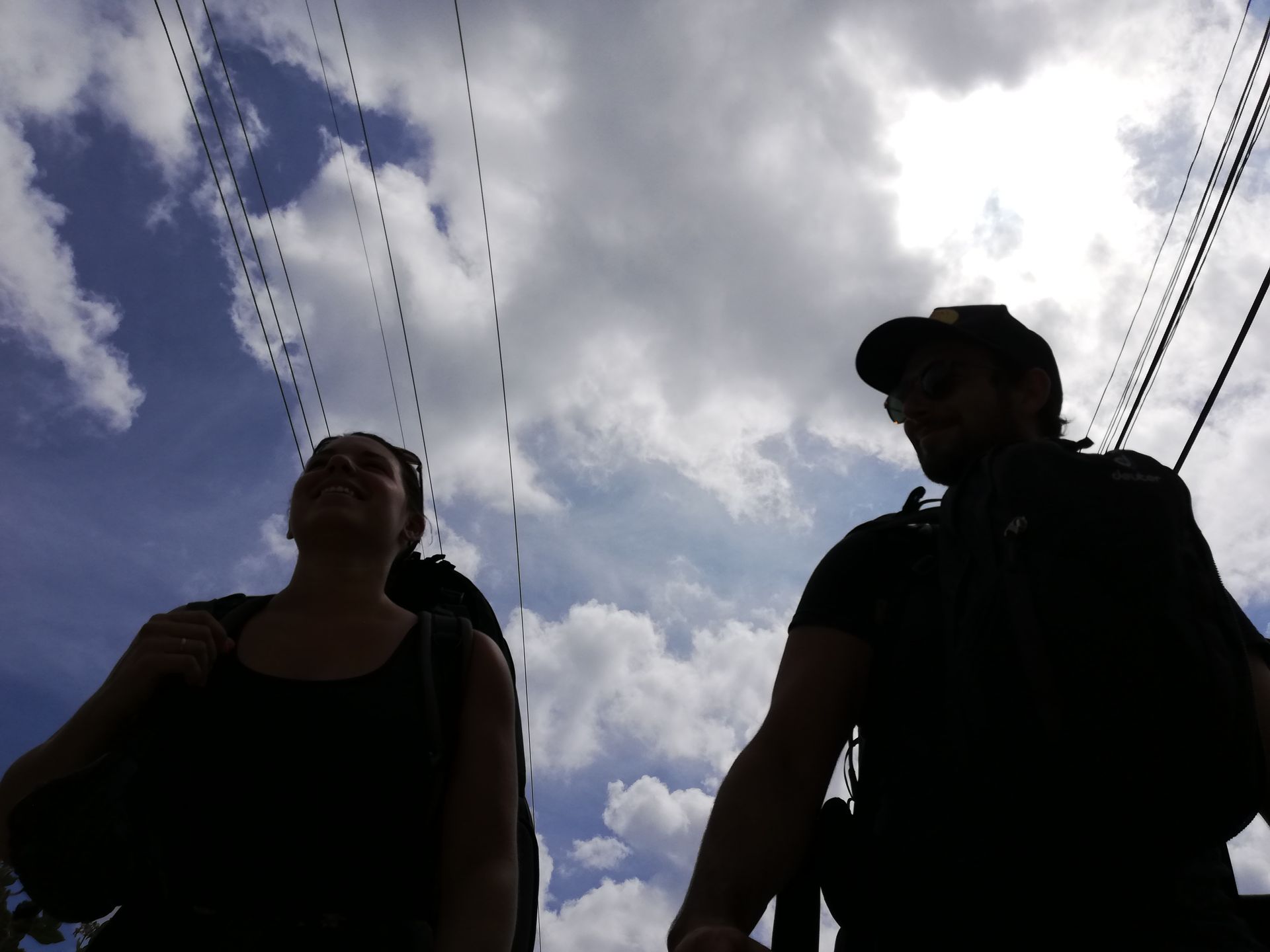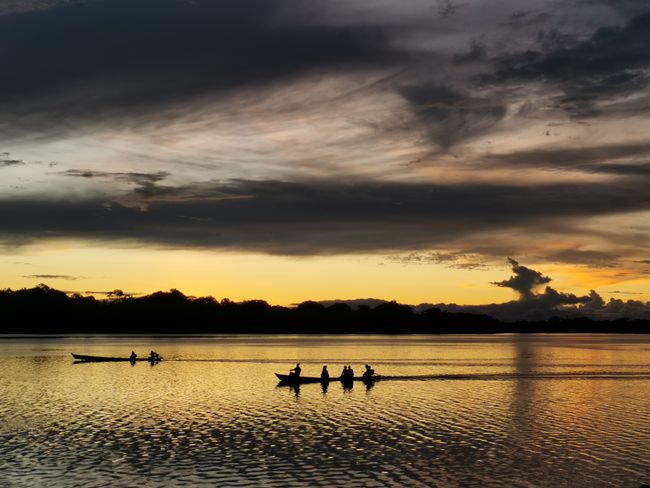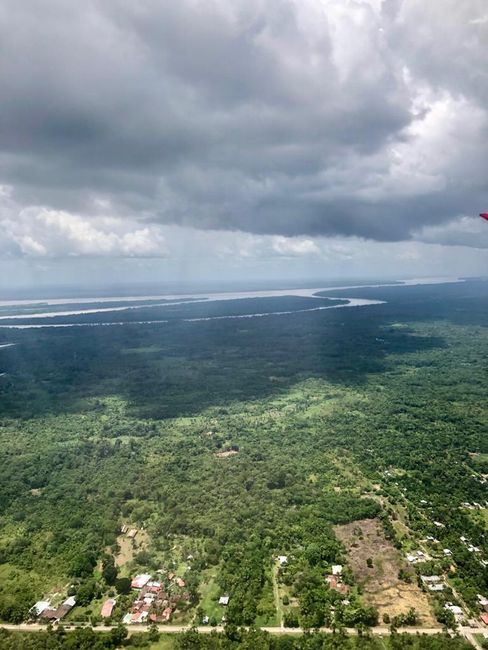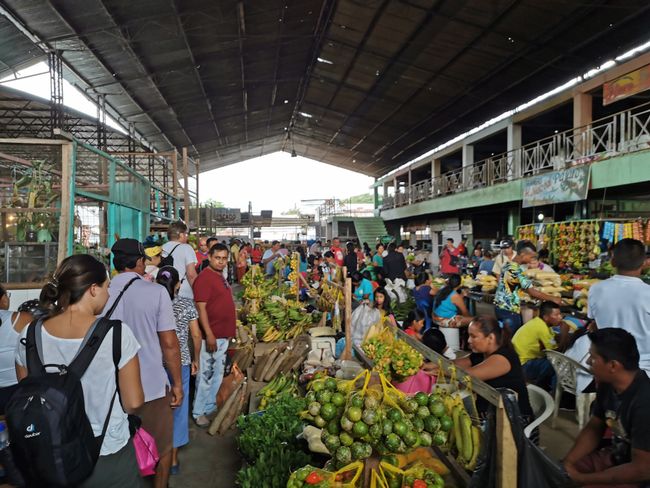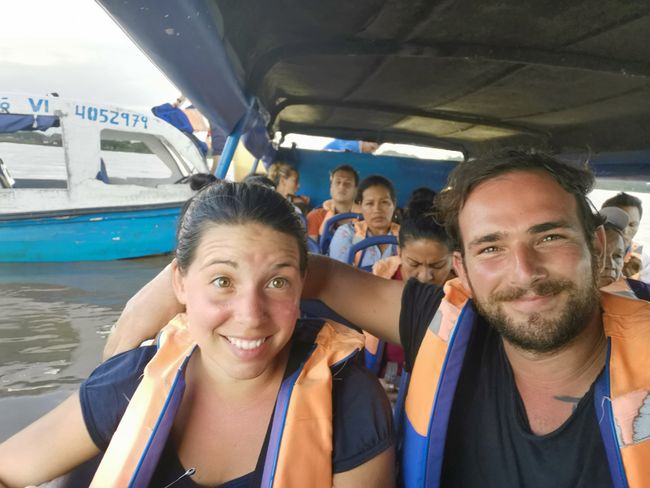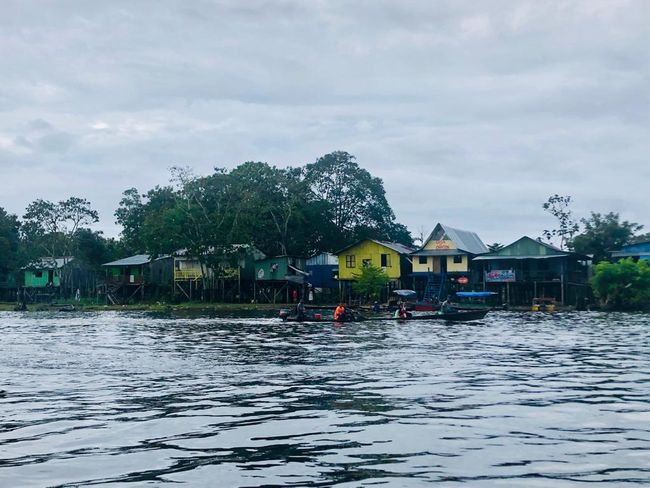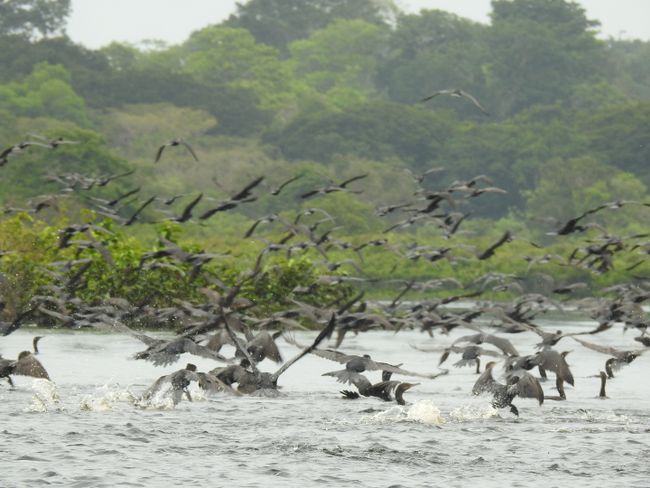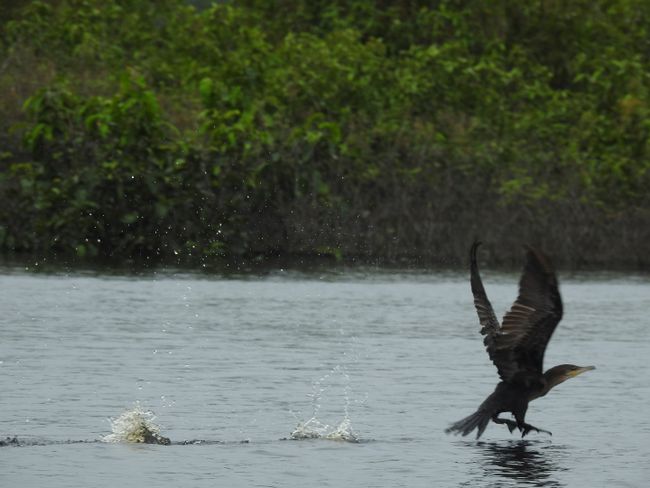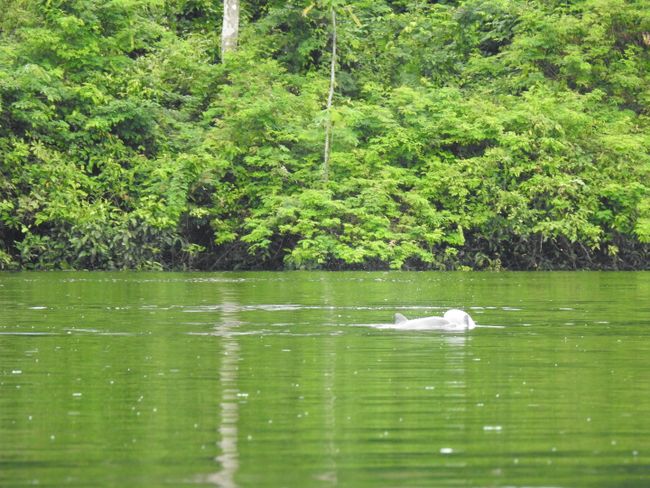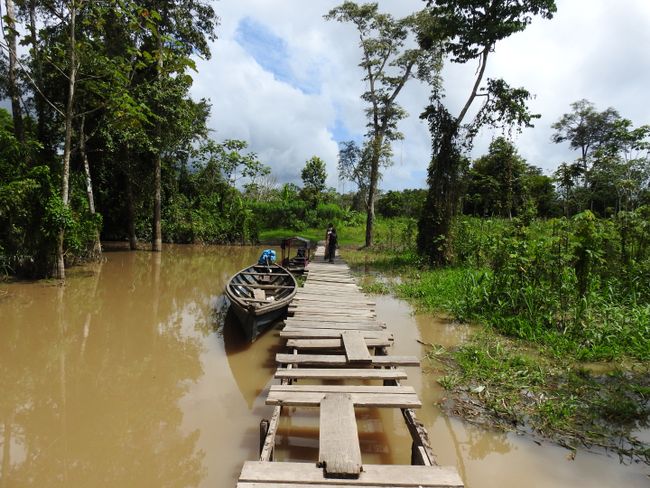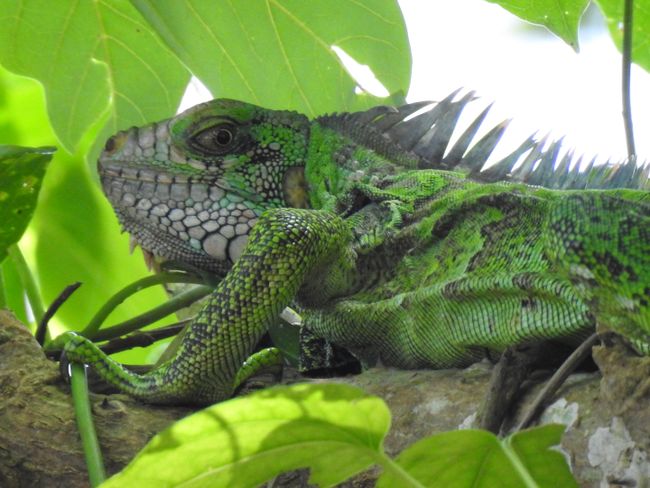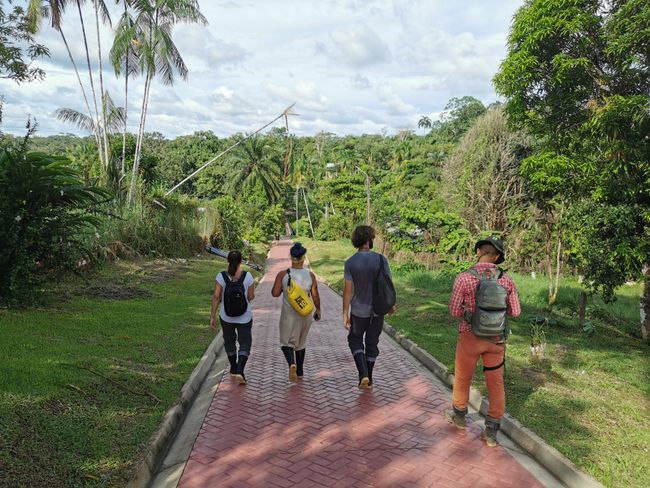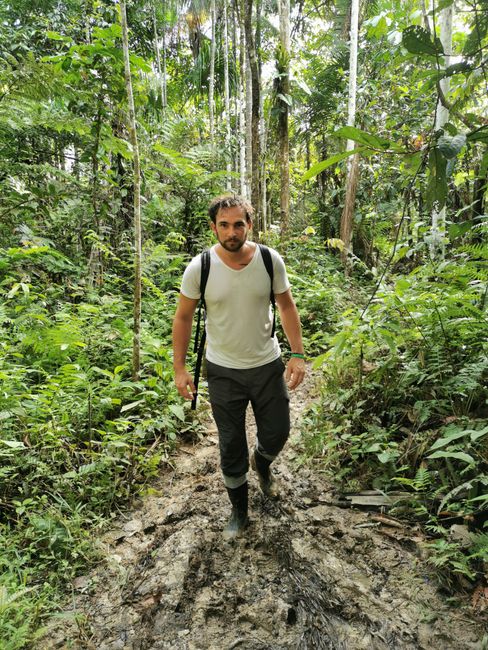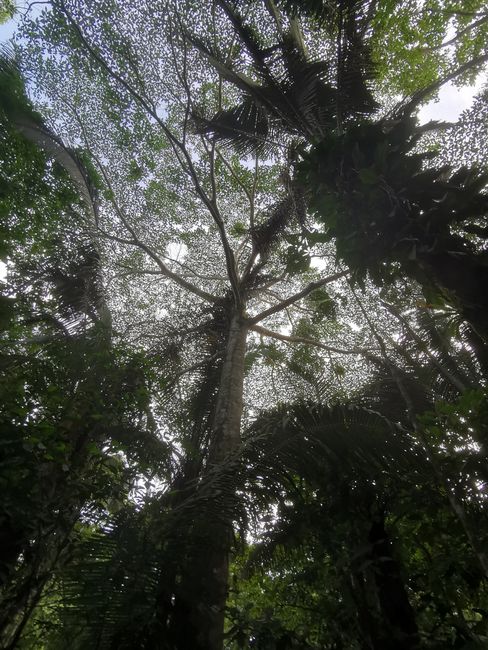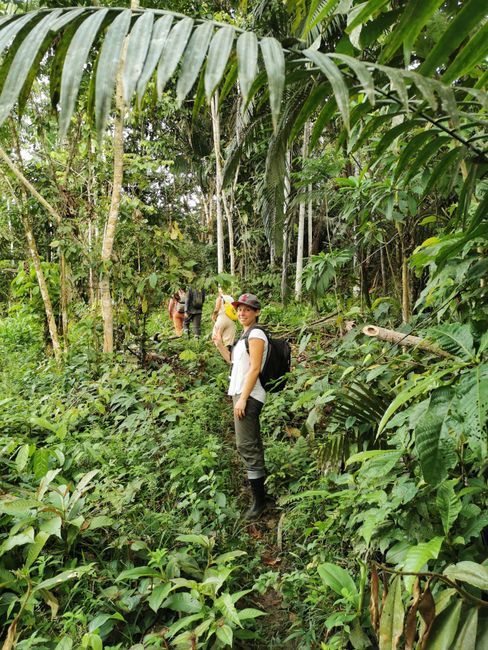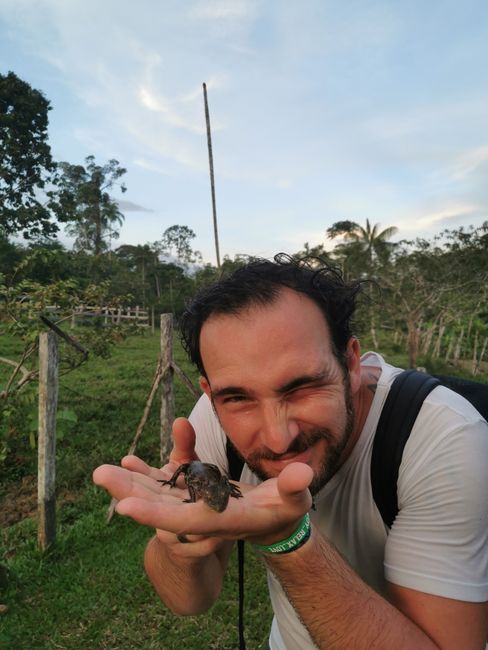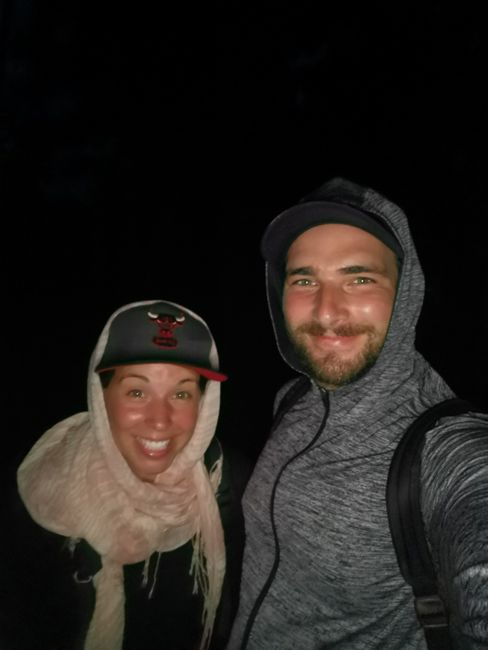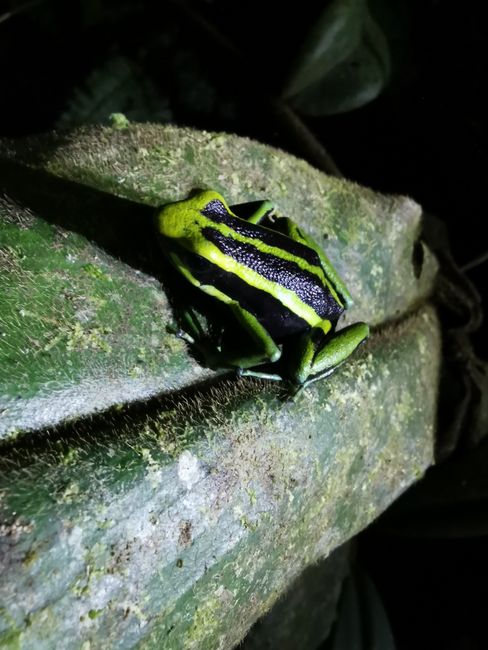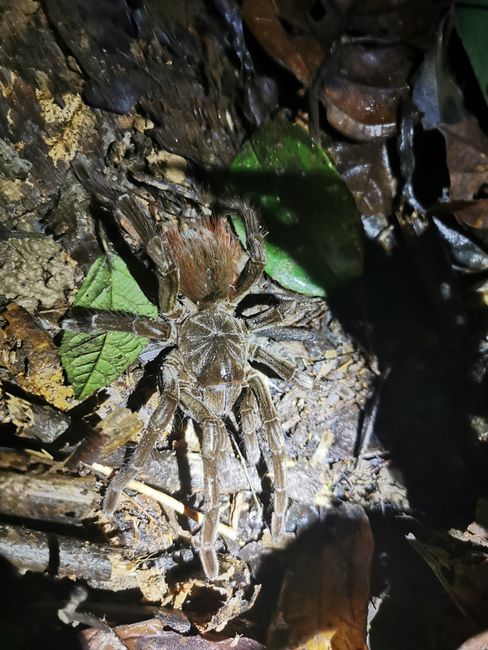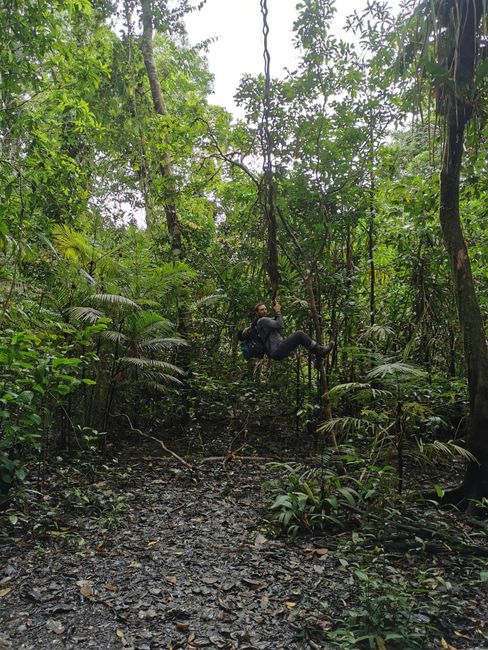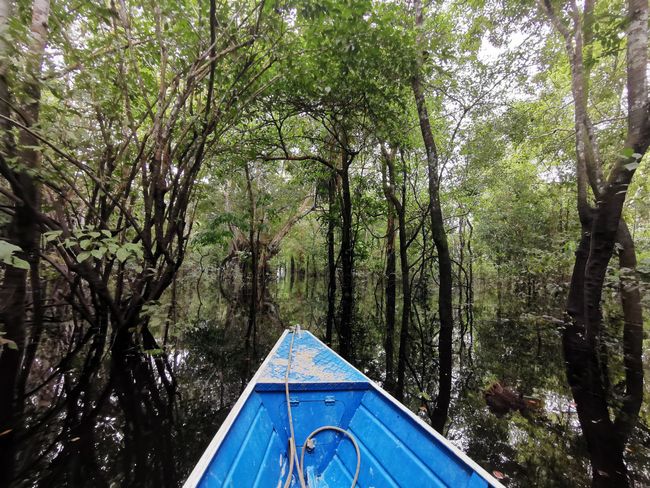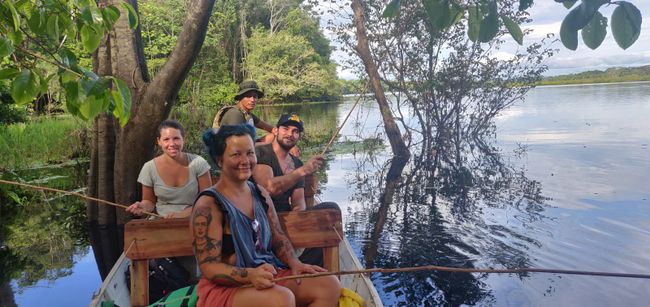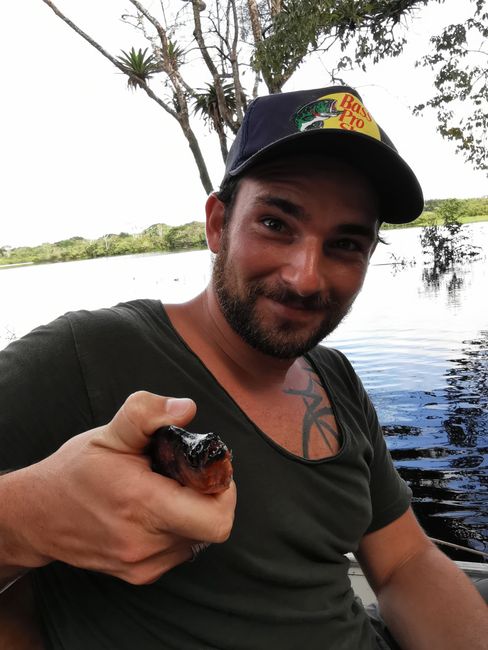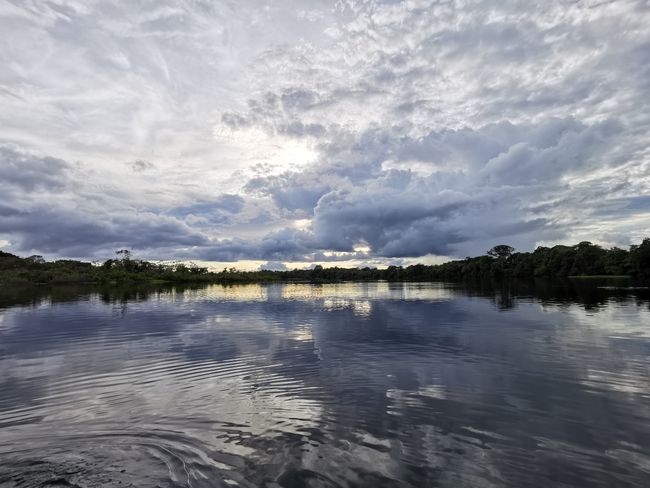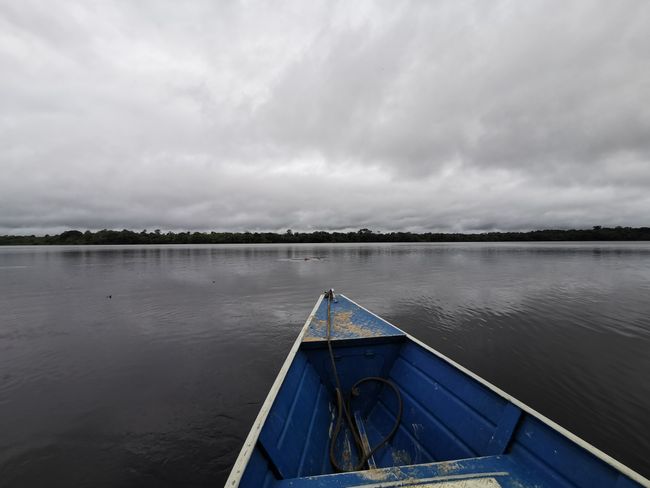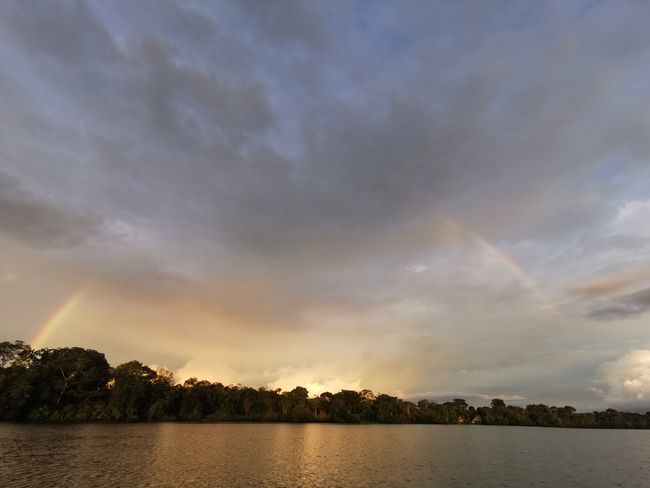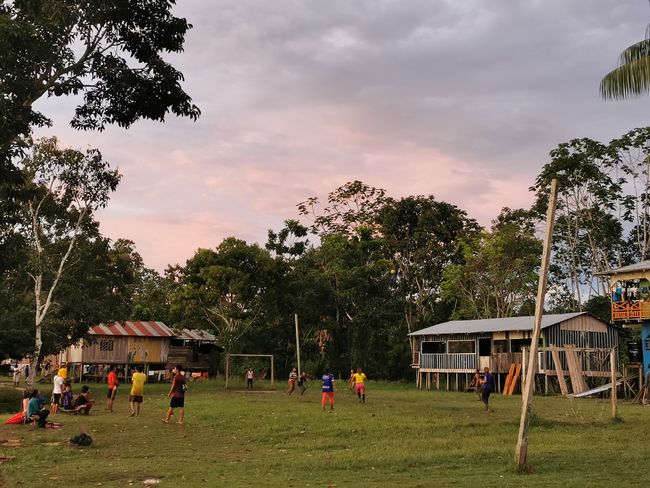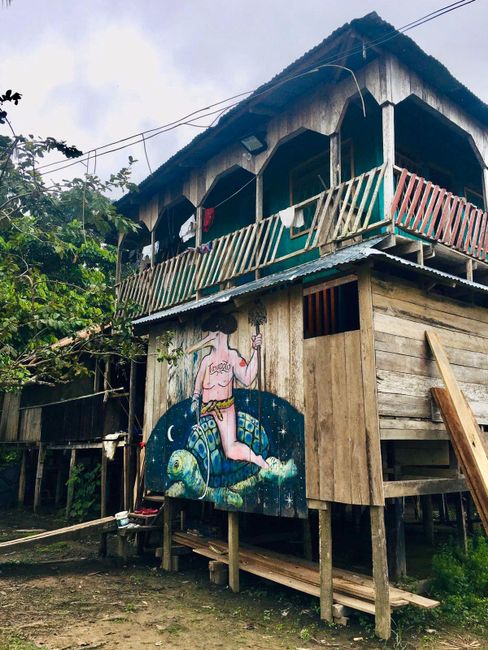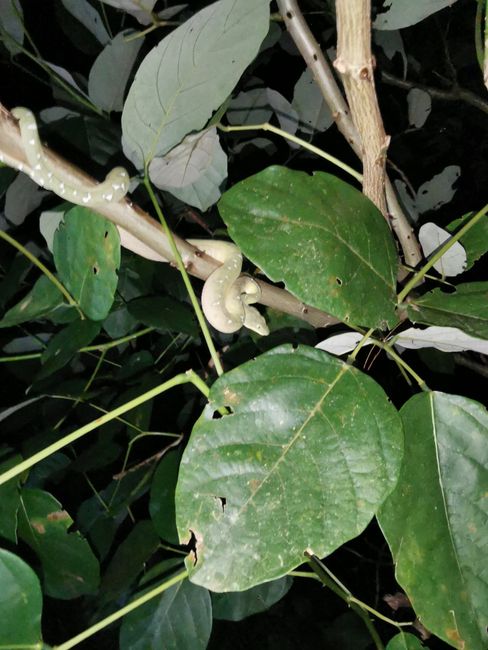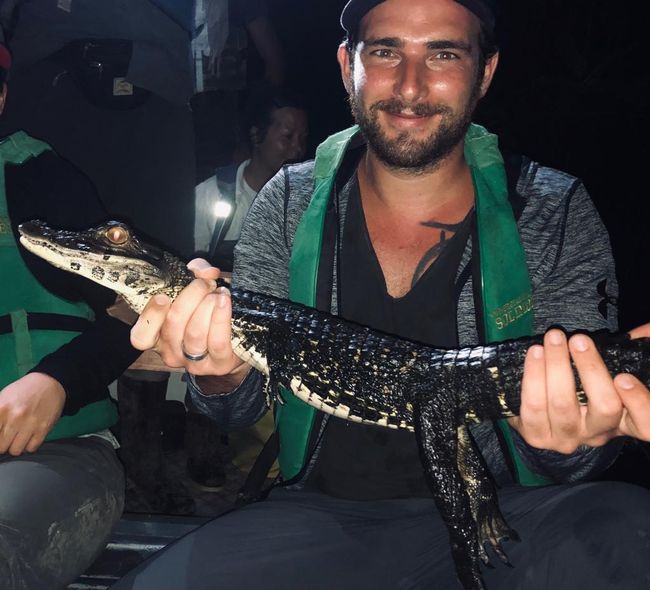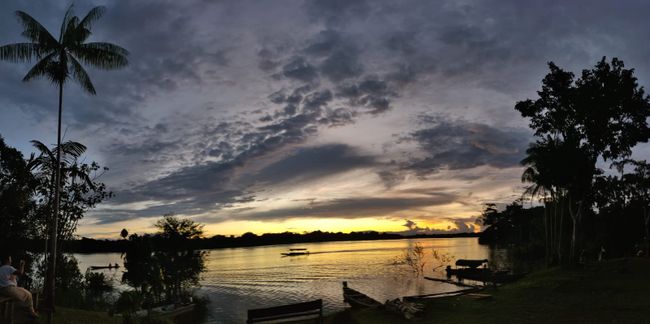Amazon
Közzétett: 19.02.2020
Feliratkozás a hírlevélre
Today we are heading to the Amazon with mixed feelings. We have watched about 200 documentaries so far. Most of them have had such terrifying names like "Big 5 most dangerous animals in the Amazon" or "most poisonous animals on Earth", "Anaconda - the biggest snake in the world", and so on. To be honest, we did it just so we could say we've done it. Of course, we are curious to see what it's like there, but honestly, who would want to spend 3 days and even worse nights surrounded by all those dangerous creatures?! One is more than enough for us. But it doesn't matter now, we are channeling our inner Crocodile Dundee and we are already on our way to Leticia, in the tri-border area of Colombia, Peru, and Brazil.
Booking a hostel through booking.ch doesn't necessarily mean that the hosts on-site also know about it. Maybe they forgot to inform booking that they are fully booked or that they haven't checked the internet in a while. It has happened a few times, even in Leticia. At least they managed to organize an alternative for us within a reasonable time frame. After a stormy night, we embarked on our "jungle" adventure and were ready at 7 o'clock. After a short walk through the fish market, where we got a first glimpse of the floating monsters that swim in the Amazon and that could feed a whole family for a week, we got on the speedboat and set off upstream. At the first rain shower, they put up opaque tarps on the left and right sides, and we sat in our sticky, swaying tent. That's when we had our first conversation with the locals who didn't want us to see that it would be better for all of us if we could leave a small gap open so we could at least see a little bit outside. "It's just a little water, no 🤮", right. We were able to reach a consensus by leaning our rain jackets against them for the ride. Phew! Our first stop was Puerto Nariño, a village of 3000 inhabitants, completely free of vehicles, and quite authentic. After lunch, we went on the jungle walk. The highlight was the many different fruits that we could taste, and who would have thought that there are so many different types of palm trees! Naively, we thought our idea was to walk on a well-trodden path, but no - it was full speed through the thicket - our guide Pedro leading the way with his machete. The whole experience was accompanied by incredible humidity, it was as humid as the rainforest in Minca, and an abundance of mosquitoes. Fortunately, the unpleasant conditions were occasionally interrupted, namely when we wondered how we would ever find our way out of the bush maze if Pedro lost his bearings or had a fainting spell or a mental breakdown. When we asked him if he uses signs like bent trees or something, he just laughed. However, when we reached the reserve, all our worries vanished when we saw the baby caiman. After darkness fell and with prime mosquito time, we ventured back into the thicket. The feeling was similar to the Hi-Way, and it was intensified by hand-sized moths and grasshoppers flying into your face while you were walking through spider webs without even realizing it. A leisurely night stroll it definitely was not, but very impressive with those poisonous, colorful frogs, a tarantula with baby tarantulas (by the way, the only animal where the babies are not cute), and a green boa constrictor. But the most impressive of all was Pedro's ability to spot these perfectly camouflaged animals in complete darkness and not lose his orientation even in total darkness. On this night walk, he gained our full trust that he would safely guide us through the tour.
Some people would have been fine with a jungle camp. But we booked a 3-day trip (the minimum) and therefore, the next day, we continued upstream on a small boat with Niina from Finland and our translator, Guido. Driving on these shallow motorboats on this wide river, with dense jungle on both sides, groups of monkeys jumping along the trees, huge flocks of birds swimming on the water, vultures sitting in the trees, and pink and gray dolphins swimming next to us, it's truly unbelievable! You feel like you're on a National Geographic expedition. Since it's currently the rainy season, the river is high and we sometimes drive between the flooded trees, creating a surreal image. Between those trees, we also tried our luck with fishing for piranhas. But we weren't as skilled as Pedro. He also found our questions about what animal eats what and what the locals eat out here very amusing. He chuckled at our ignorance about flora and fauna and our false facts from Bear Grylls. Apparently, catching catfish with bare hands is not a common method. By the way, the breaking point came when Niina, who used to work in the film industry, mercilessly revealed that the Bear Grylls documentaries are all filmed in the studio.
In the evening and at night, we stayed with an indigenous tribe in Tarapoto, which consists of 13 families with about 46 people. They live in very simple conditions without electricity, their shower is the river, and they really seem to be very connected to nature. They attribute the Down syndrome of a boy to the power of the pink dolphin. Apparently, when he was a little boy, he went fishing with his father. To catch the fish for himself, they scared away a pink dolphin with a stick. In revenge, the dolphin "enchanted" the boy. After dinner (by the way, the huge pirarucù fish is not enough for a week or a family, they eat an enormous amount of fish around the clock) we went on a caiman expedition. Driving along the Amazon in the moonlight is somehow magical and also a bit scary. The local guide who accompanied us scanned the riverbank for the reflective eyes of the caimans, and we actually found one. Without hesitation, we steered our boat towards the reeds, the boy on the bow made a quick grab into the water and pulled out a huge creature with his bare hands. Their ability to find the animals and their handling fascinated us almost as much as the caiman itself. And even in the confusing waters of the Amazon, in complete darkness, Pedro did not lose his orientation. We already feel like we are at his mercy out here in the wild, and we have the utmost admiration for him.
After the third day and many jungle walks, fish-rice-lentil dishes, plant explanations, and mosquito bites, Pedro took us back downstream in the boat taxi. Although the fuel ran out briefly before we reached our destination, delaying the journey back to civilization a bit (it can happen, even the ferry from Horge to Meile occasionally runs out of fuel), we arrived safely and are now looking forward like crazy to our 4-star hotel and laundry day. The conclusion of this jungle trip is as we already suspected: we didn't exactly enjoy the muddy trek through the thicket with its countless insects - one more than the other. But we will definitely never forget the impressions. And now, freshly showered, back in the air-conditioned hotel room, we can say: the experience was worth the effort and it was definitely a once-in-a-lifetime adventure, emphasis on ONCE-in-a-Lifetime!
Feliratkozás a hírlevélre
Válasz
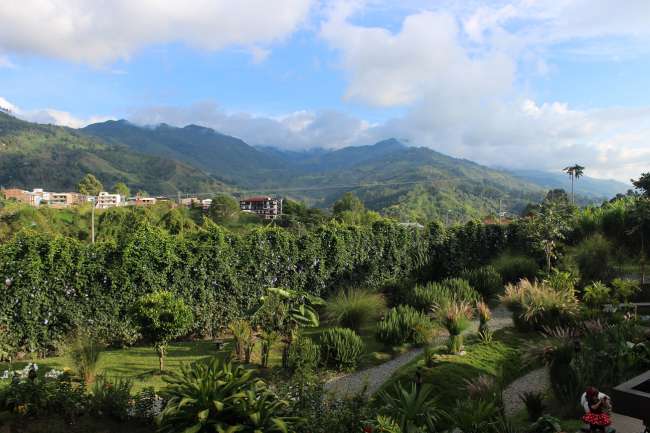
Colombia utazási jelentések
